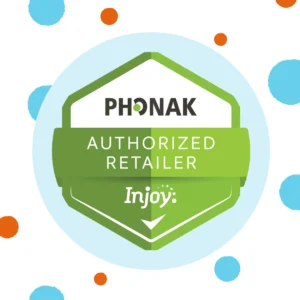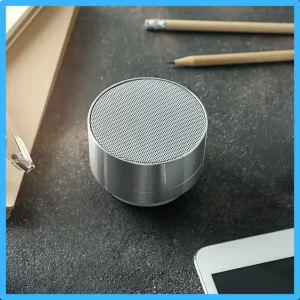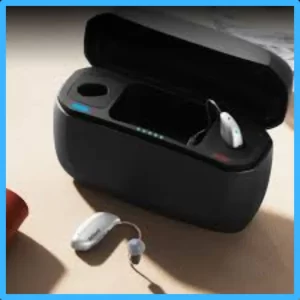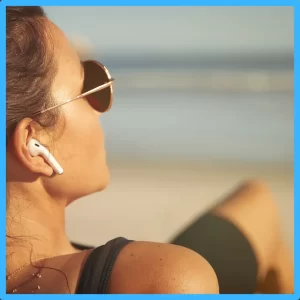
Top 3 Phonak Hearing Aids Near Me
Phonak Hearing Aids Near Me… Without Leaving The Sofa Looking for Phonak hearing aids near me? Good news: they’re already closer than your fridge. With
Home » Assistive Listening Devices vs. Hearing Aids: Understanding the Differences

When it comes to improving your hearing, it’s easy to get confused. Assistive listening devices (ALDs), hearing aids, and even Apple’s AirPods all have sound-boosting features, but they serve different needs. In this guide, we’ll explore these devices, explain who they’re for, and help you decide which option best fits your needs. Grab a coffee, and let’s dive into the wonderful world of hearing technology!
Table of Contents
ToggleAssistive Listening Devices (ALDs) are tools designed to enhance hearing in specific situations where regular hearing may not be enough. Unlike hearing aids, which are intended for all-day use and are tailored to the individual’s unique hearing loss, ALDs focus on amplifying particular sounds or sources. This makes them ideal for people with mild to moderate hearing loss who need help only in certain situations—think of listening to the TV, attending a lecture, or holding a conversation in a noisy restaurant.
ALDs aim to make specific sounds clearer. They can reduce the frustration of missing details in environments where background noise or distance muffles audio. ALDs connect to a specific sound source, such as a television, microphone, or phone, amplifying that sound directly for the user. This selective amplification means users don’t hear all ambient sounds but instead focus on one primary source, making it easier to enjoy conversations, music, or public performances.
ALDs typically consist of two parts: a transmitter and a receiver. The transmitter picks up the audio signal from the source—whether a speaker, TV, or phone—and sends it to the receiver, which the user wears. The receiver then amplifies the audio directly into the user’s ear, reducing the impact of background noise and enhancing clarity.
This direct connection to the sound source offers a much more focused hearing experience compared to hearing aids, which amplify all sounds in the user’s environment.
ALDs are an excellent choice for those with mild to moderate hearing loss who don’t require all-day amplification. They’re also ideal for individuals who experience hearing difficulties in particular settings but otherwise manage well. ALDs can supplement hearing aids in challenging listening environments, offering a useful boost in specific situations like watching television, attending events, or talking on the phone.

There are several types of ALDs, each suited to different environments and needs. Let’s take a closer look:
FM systems transmit audio signals using radio waves, sending the sound from the source directly to the listener’s ear. Commonly used in classrooms or lecture halls, they enable clear communication over distances and through background noise.
Infrared systems use light waves to transmit sound, which means they work best in closed environments without obstructions, such as theaters or conference rooms. These systems ensure that sound remains clear and exclusive to the listener, as walls block the infrared signal, making it ideal for privacy.
Loop systems, also known as induction loops, use magnetic fields to transmit sound directly to hearing aids equipped with telecoils (or T-coils). These systems are often found in public venues like churches, auditoriums, and airports. They work seamlessly with hearing aids, providing clarity in loud environments.
Personal amplifiers are portable devices that amplify sounds nearby, such as conversations or phone calls. They’re small, discreet, and convenient for everyday use, allowing users to carry them to restaurants, meetings, or family gatherings for added clarity in conversations.
In summary, while ALDs offer targeted amplification for specific scenarios, they lack the versatility of hearing aids. ALDs enhance particular sounds but may not address all-day hearing needs. For those needing consistent amplification, hearing aids are the better choice.
Hearing aids are medical devices designed to improve overall hearing across diverse environments. Unlike ALDs, which amplify sound from a specific source, hearing aids are highly customizable and offer an all-encompassing solution for those with moderate to severe hearing loss. They improve both volume and sound clarity, making everyday conversations and environments more accessible.

Hearing aids cater to individual hearing profiles, providing a personalized experience. Here’s why they’re often preferred over ALDs:
For those who require consistent hearing support in multiple environments, hearing aids provide an all-in-one solution.
Learn more about the link between hearing aids and longevity.

AirPods, primarily known for music and phone calls, can assist with mild hearing challenges through features like Live Listen. By connecting AirPods to an iPhone, users can turn their phone into a microphone, amplifying sounds directly into the AirPods. This feature is handy in noisy spaces or for distant conversations, like in restaurants or lecture halls.
However, while helpful in specific cases, AirPods don’t match the functionality of hearing aids or ALDs. They lack medical-grade sound customization and advanced technology needed for consistent hearing support.
AirPods are convenient for mild, occasional amplification but fall short for those needing full-time assistance.
Let’s compare these options side by side:
| Feature | Assistive Listening Devices | Hearing Aids | AirPods |
| Primary Purpose | Amplify specific sounds | Amplify sounds to improve overall hearing | General audio tasks |
| Medical Grade | No | Yes, regulated by the FDA | No |
| Customization | Limited | Highly customizable | Limited |
| Professional Fitting | Sometimes required | Always required | Not required |
| Battery Life | Varies | Up to 24 hours | 4-6 hours (varies by model) |
Each device has its strengths. Here’s a quick guide to help you decide:
Consulting a professional hearing specialist (which you can do online at Injoy) is crucial to finding the best solution for ongoing hearing needs.
Personal Sound Amplification Products, or PSAPs, often seem appealing because of their affordability. These devices amplify sound for the user, making them a seemingly simple solution for those who experience mild hearing difficulties. However, PSAPs come with notable limitations that make them far from ideal for addressing genuine hearing loss.
Unlike hearing aids, which are regulated medical devices, PSAPs don’t require FDA approval. They’re not designed or intended to treat hearing loss, but rather to enhance sound for individuals with normal hearing who want to hear better in specific situations. Think of birdwatchers who want to hear subtle sounds in nature or concert-goers wanting to hear music with extra clarity. PSAPs don’t provide the medical-grade amplification needed for consistent hearing support and do not cater to individuals with varying degrees of hearing loss.
PSAPs are essentially one-size-fits-all solutions. They amplify all sounds equally without differentiating between important sounds, like speech, and background noise. This lack of fine-tuning can make noisy environments challenging to navigate. While hearing aids undergo precise calibration to amplify only the frequencies the wearer struggles to hear, PSAPs lack this level of customization. For instance, someone with high-frequency hearing loss needs amplification specifically for those frequencies, but PSAPs simply turn up all sounds, which can lead to an overwhelming listening experience.
Because PSAPs amplify everything indiscriminately, they can lead to sound distortion and discomfort. Loud, sudden sounds, like clanging dishes or honking horns, get amplified alongside speech, often startling the user and making it difficult to focus on conversations. Additionally, this general amplification can increase the risk of further hearing damage, as users may unknowingly expose themselves to volumes that exceed safe hearing levels.
Audiologist Dr. Melissa Danchak compares PSAPs to “reading glasses from the drugstore—they’re a one-size-fits-all solution.” While they might work for occasional needs, they lack the specialized support that prescription glasses—or in this case, hearing aids—can provide. Just as reading glasses can’t address complex vision issues, PSAPs can’t cater to the unique patterns of hearing loss each individual has.
PSAPs also fall short in terms of technological advancements. Hearing aids often feature advanced technologies, such as noise reduction, Bluetooth connectivity, and feedback cancellation, all of which improve listening comfort and quality. PSAPs, however, are limited to basic amplification, lacking the sophisticated algorithms and processing power of hearing aids. Additionally, PSAPs generally have a shorter lifespan and are not built to withstand daily wear and tear like hearing aids, making them a less reliable option in the long term.
Bottom Line: While PSAPs may be useful in very limited cases, they’re not a solution for true hearing loss. They lack the customization, comfort, and technology of medical-grade hearing aids, which are essential for people who need dependable hearing support. For individuals experiencing consistent hearing difficulties, professionally fitted hearing aids remain the best option.
Don’t compromise when it comes to hearing. The right device can significantly improve your quality of life.
Injoy Hearing specializes in helping you find the best device for your hearing needs. Our team of professionals can help you determine the right solution, ensuring that your choice fits your hearing needs and budget. Contact Injoy today and start your journey to better hearing!

Phonak Hearing Aids Near Me… Without Leaving The Sofa Looking for Phonak hearing aids near me? Good news: they’re already closer than your fridge. With

ou step into a surprise downpour after the gym. Your hearing aids keep humming. You wonder, are hearing aids waterproof or just tough enough for

Learn how frequency compression in hearing aids enhances sound clarity for individuals with high-frequency hearing loss, improving communication and quality of life.

Explore the pros and cons of remote and in-person hearing aid fittings to find the best option for your lifestyle and hearing needs.
Injoy specializes in crafting custom Phonak hearing aid solutions tailored to the unique hearing needs of our patients. With a team recognized as the best in the business and decades of experience in helping people nationwide, we’re dedicated to improving your hearing and, consequently, enhancing your quality of life.
To start your journey towards better hearing with confidence, Injoy is proud to offer a 30-day risk-free hearing aid trial. This allows you to experience the difference our Phonak hearing aids can make, ensuring they meet your expectations and fit your lifestyle perfectly.
Improve your hearing and improve your life today by contacting Injoy to learn more about our risk-free trial!

Need hearing aids? Explore our range of hearing aids and discover the best option for your lifestyle and Unique Hearing Needs.
Are you a current patient with us? We're here to help with any adjustments, repairs, or support you may need.